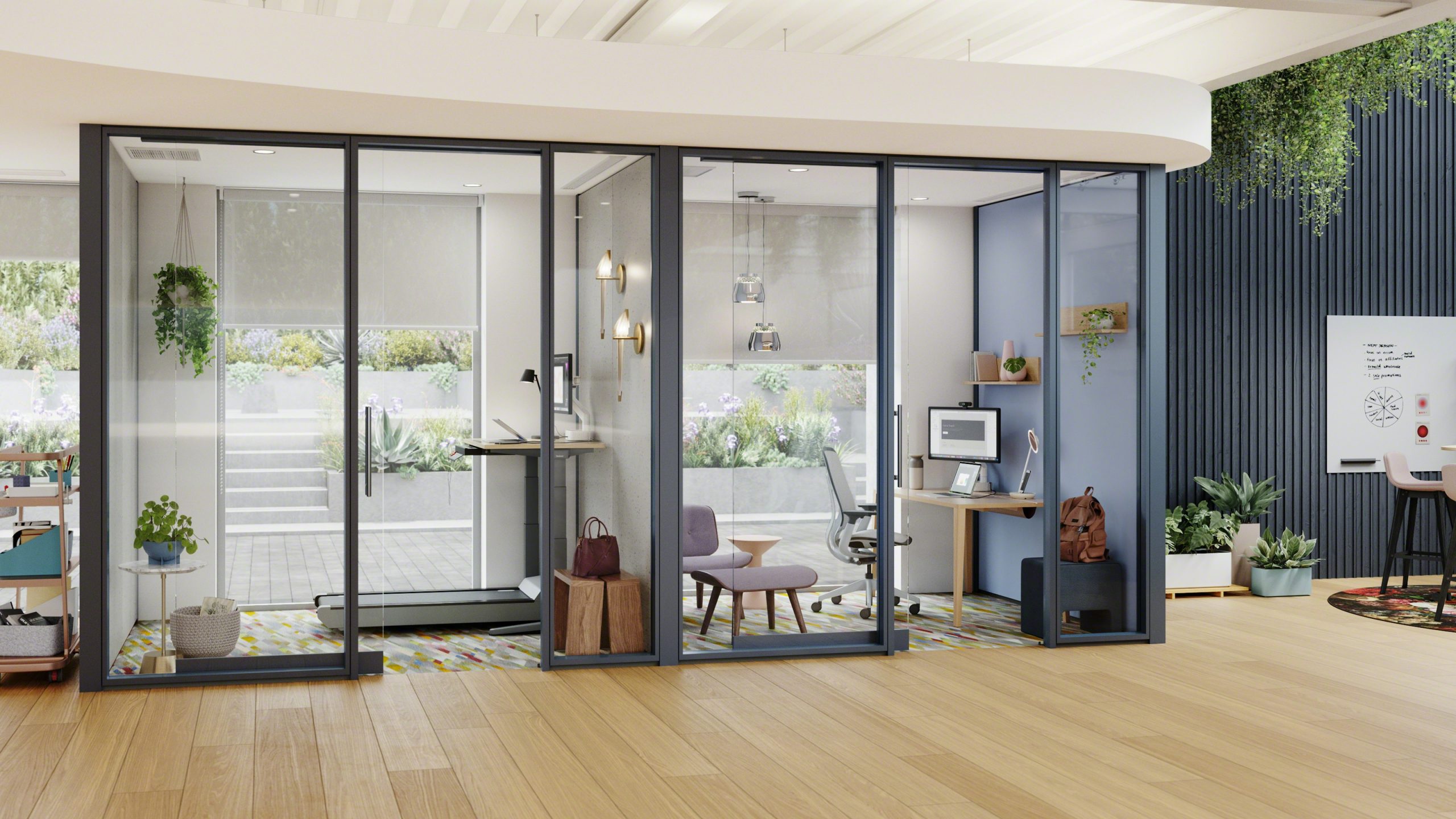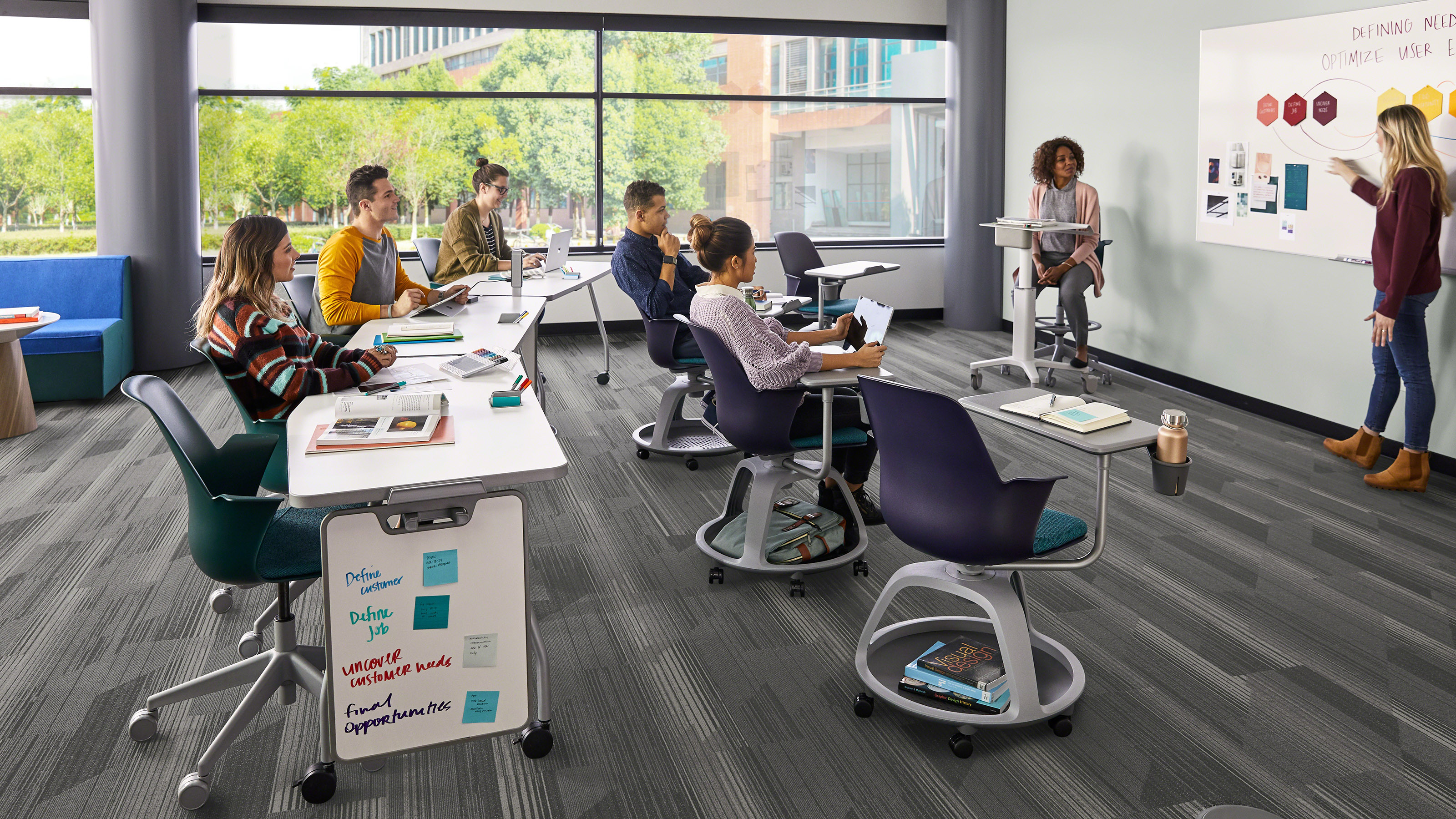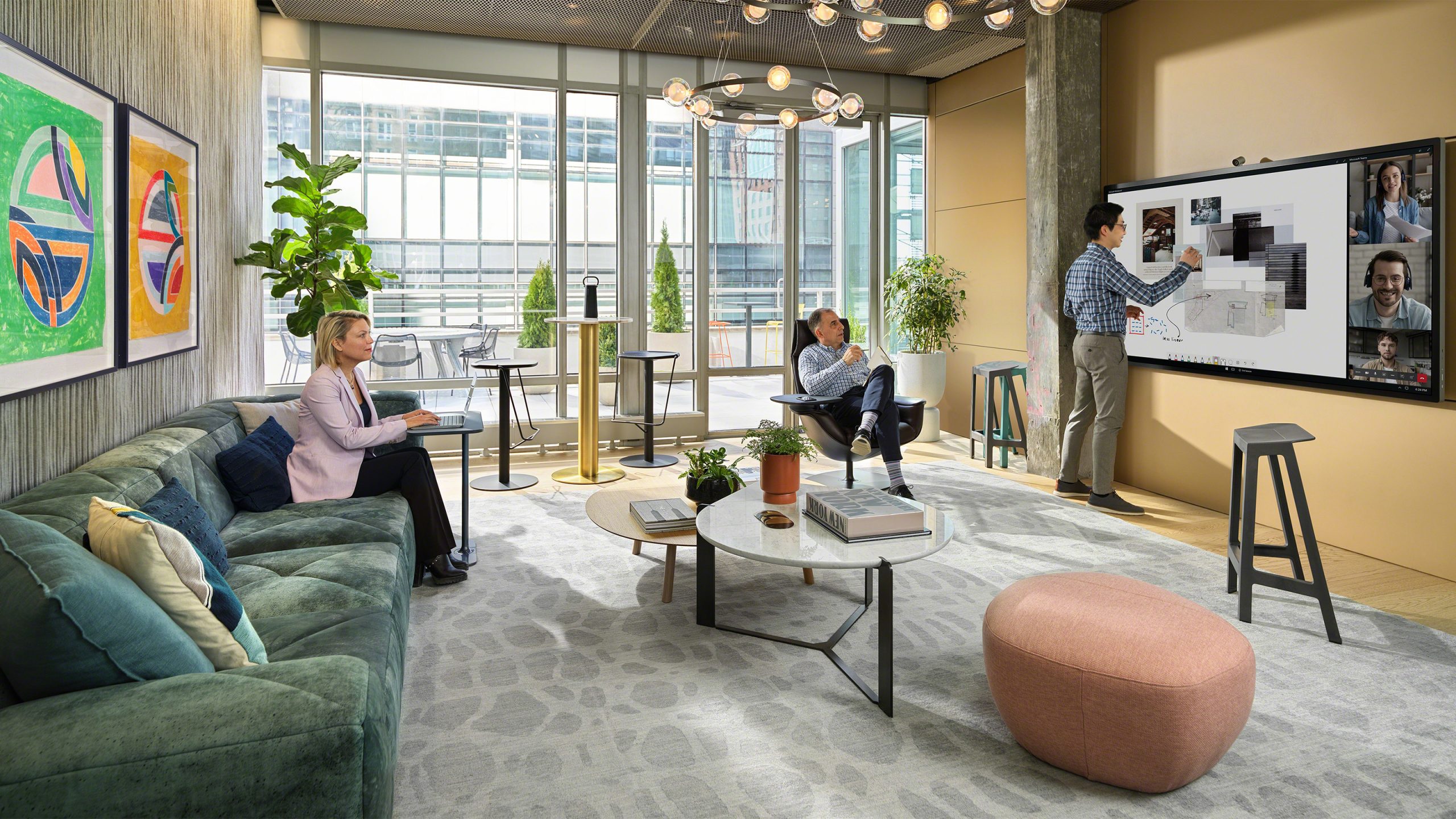The Post-COVID office needs to evolve to stay relevant. It has to provide the right smart office technology and environment customized for the hybrid workforce and help employees reach their true potential. With the advent of remote working, for offices to still be important, a desire to come to the office has to be instilled in the employees. Businesses are thinking about how each piece of technology – hardware, software, cloud, services – must work together to deliver the benefits of the smart office.
Technology has grown to become an immense part of our personal lives and has reshaped the average workplace. Innovation supported by technology has changed office design and the entire approach to it, supporting the new-age workforce in achieving better productivity through enhanced user experience along with physical and mental work-life balance. No matter what office trends are dominant post-Covid, one thing is certain: agile office spaces and smart office technology will enable safety, flexibility, efficiency, connectivity, and comfort for an evolving workforce.

Smart Workplace trends fuelled by Technology
A truly “post-Covid” era has not yet arrived, and the timeline for achieving some semblance of normality is uncertain. The coming months will be pivotal as businesses decide how to proceed with a long term plan for their workforce and physical office spaces. We had published a blog on the post-COVID office design trends which you can read here.
The demand for smart office buildings will grow over time. Offices with advanced technology can support a company’s environmental, sustainability, health, and wellness objectives while also offering a better overall experience for the workforce. In this blog, we will discuss how different technologies and smart furniture will play a bigger role in our work.
Video conferencing and meeting room technology
With the great increase in remote workers for companies of all sizes, it’s the critical piece of technology that connects both remote workers and team members at all locations. There will be a need to create many remote-work friendly smaller meeting rooms. These digitally-inclusive rooms should incorporate:
- Easy to use, fully integrated video conferencing software
- High-quality camera equipment
- Smart meeting tables
Workplace Apps
As people start to return, workplace apps are evolving to include new features focusing on health and safety. It is important for the different business departments and different tasks, from room bookings to logging workplace facilities requests to be fully integrated. Even before the pandemic companies were gradually adopting a wide variety of apps to support employees and office operations but now, they are playing a business-critical role.
Contactless access
Access systems and automated door locks enable a safer and more secure office building, and they also allow for keyless, contact-free entrances e.g.
- Voice control
- Gesture control
- Biometric access
Sir/stand desks and smart chairs
To promote employee wellness and collaboration, every office should be using smart sit/stand desks and chairs which can be connected to apps via BlueTooth. It allows users to control the desk height and set activity goals — somewhat like a Fitbit. Data monitoring and control serves the user’s health through technology.

Bring your own thing (BYOT)
With millennials shaping the latest office trends, it is inevitable that we see their influence over technology preferences in the workplace. Having the ability to use their preferred apps and devices at work provides a choice in how individuals work and collaborate. BYOT involves a wide range of objects, such as fitness bands, smart lights, air filters, voice assistants, smart earbuds, and virtual reality (VR) headsets.
IoT sensors
IoT sensors can enable lights, control HVAC systems, and more. IoT sensors can detect motion and occupancy, making it easy to program devices, fixtures, and utilities to turn off or enter power-saving mode when no one is using the space. This allows workplace leaders to implement environmental improvements such as heating, cooling, and lighting which all have significant impacts on employee health and wellbeing.
Wireless charging
Nobody likes the look of bulky wires, and finding an open charging port in a busy office can feel like an impossible challenge. Thanks to wireless charging, these hurdles are a thing of the past. There are devices and smart furniture available which have the feature and makes charging electronic items charging easier for everybody at the workplace.
Collaboration tools
New collaboration applications, tools, and software enable real-time tracking of projects, make it easier for the reviewing and editing of documents, and make the management of tasks more efficient. As the workforce changes and remote workers increase, the use of collaborative tools like these will obviously increase.
Artificial Intelligence
AI will be the most transformational technology of the modern era. AI ingests examples and figures out the rules on its own. It can help businesses develop new products, experiences, markets, and business models; enhance the worker experience, and streamline operations. It can be used as an engine to predict what might happen next.
Immersive technology
Immersive technologies such as virtual reality and mixed reality will continue to drive engagement, and change how people across all workplaces communicate and collaborate. With the rising millennial influence within the workplace, this generation expects nothing less than to be able to collaborate in real-time on design within a virtual framework.
Conclusion
The bottom line is that a fully automated workplace environment is not out of reach in a post-pandemic world. But while we are not going to see major changes overnight. It has taken a pandemic to change the face of office technology and bring new features that could make our work life more efficient, productive, and healthy. Using advanced technology to support employees in the workplace is a transformational concept. Organizations that get it right will attract, engage, and retain the very best talent.
Source: https://www.sunonglobal.com/blog/index.php/2020/11/13/how-smart-offices-will-help-reshape-our-future-work-life/?utm_source=blog&utm_medium=linkedin&utm_campaign=11.13
Powered by Froala Editor

